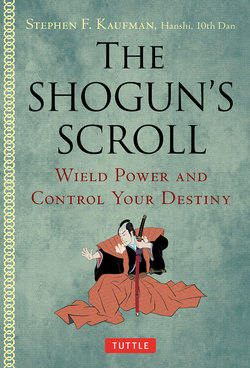Читать книгу The Shogun's Scroll - Stephen F. Kaufman - Страница 9
ОглавлениеIntroduction
This is a work of docu-fiction. As an author, and based on my personal investigations into the teachings of Miyamo- to Musashi’s Book of Five Rings and Sun Tzu’s Art of War, I have crafted an ancient text written as a historical document that illustrates the workings of the medieval mindset of conquest attributed to Minamoto Yoritomo, the first shogun of Japan, who is considered one of history’s most ruthless and savage generals.
Writing in the voice of an advisor to Yoritomo, Hidetomo Nakadai, a regent and scholar of no particular rank or importance other than being a samurai (“one who serves”) in the court of the Minamoto clan and a retainer to the shogun in the late twelfth century, the Shogun’s Scroll comes to life and is viable as any work of its type at any time in history.
In Yoritomo’s time, the entire country was in turmoil: countless coups, indescribable conspiracies, and assassinations were an everyday occurrence. It was during this period that the ninja became identifiable. Zen Buddhism had just been introduced into Japan from China by the priest Eisai and it was already making its influence felt, creating religious strife as well. The Minamoto were fighting the Taira clan for control of the government and warfare was constant. It was in this serious state of national debilitation that Nakadai, under constant query by Yoritomo for his thoughts and opinions regarding the state of affairs and rules of conduct in government, puts his ideas into writing. Because of the precarious nature of his court position, Nakadai had to be sure that what he advised the first shogun of Japan was the utmost in correctness. He could make no mistakes if he valued his life.
During the course of history, there have been many attempts at similar “truths” revealed in different parts of the world. Nakadai was held in very high esteem and did not have to qualify his philosophical position. He maintained himself in an ever higher position in his world and died a very rich and happy man singularly honored by all who knew him and knew of his work.
Once past the introduction by Nakadai, which establishes proper etiquette and politeness, Yoritomo could study the rhyme and reason of men’s actions in conducting their affairs and lives while comparing them to his own exploits based on the historical examples Nakadai cites throughout the book. Nakadai obviously had the experience and ability, as well as the respect of the court to intelligently present these ideas to Yoritomo, but begs forgiveness for his arrogance in telling the shogun how to conduct his affairs. He also suggests with humility that the words be read in the spirit in which they are written and the understanding that permits a man to realize his own greatness.
As a hanshi, a working philosopher, and strategy facilitator, I am not interested in actual historical events that set the stage for my writings. I am more concerned with the information and the understanding of it that provides answers for every man. This scroll should be used as a guide for personal progress through life, although it should be understood by the reader that certain ideas presented to the shogun in the twelfth century do not pertain to contemporary life and society such as looting and revenge. If one reads daily newspapers and listens to news broadcasts, it is commonplace in today’s convoluted societies. I do not advocate many of the ideas set forth herein, and neither should anyone with an enlightened mind. I believe that the work is more important than the worker until both become the same, and I have endeavored to structure my life based on the majority of the principles presented in the Shogun’s Scroll.
The Shogun’s Scroll is structured as a recently discovered and previously hidden work and as such, arcane works of profound philosophical value would not have had ample exposure. Veiled in mystery, it would have given the reader of Nakadai’s time a tremendous advantage in governing the realm if the ideas could be internalized by an individual. The severe penalties suggested by Nakadai for violators of the shogunate must have pleased Minamoto Yoritomo as well. He rewarded Nakadai with an entire fiefdom and elevated him to the position of “monchujo,” the equivalent of a seat on the American Supreme Court.
And so, in keeping with the premise of the Shogun’s Scroll, copies of the work that might have been found were eventually destroyed with the exception of the four that exist today with the seal of Minamoto Yoritomo, indicating that they were the only copies to be kept. Anyone who had a copy was also to be destroyed (Nakadai’s influence, undoubtedly). Consider how fortunate you are to have one in your hands. Also Nakadai’s influence—undoubtedly.
Such is the profound importance of the work. The attitudes expressed in the Shogun’s Scroll far exceed any of those works of literature that appear to emulate it. And so, here it is presented to the world for the first time in nearly 800 years. Learn from it!
— Hanshi Stephen F. Kaufman
New York City 2011
